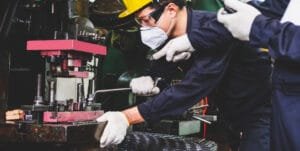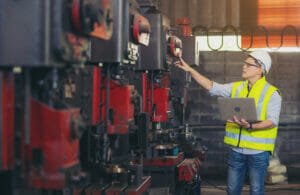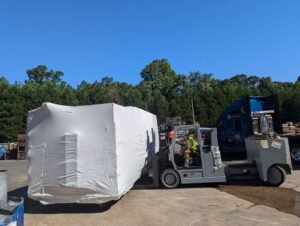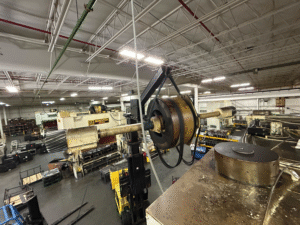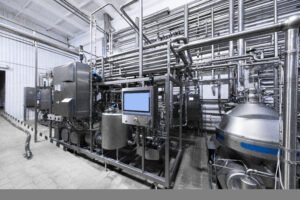In the dynamic and demanding world of industrial settings, the importance of preventive maintenance cannot be overstated. It serves as a critical strategy for ensuring the continuous and efficient operation of complex machinery and equipment. However, despite its evident benefits, the implementation of preventive maintenance often encounters significant challenges that can impede its effectiveness. Addressing these challenges is vital for maximizing the benefits of preventive maintenance and ensuring the smooth functioning of industrial operations.
Understanding the Significance of Preventive Maintenance
Before delving into the challenges faced in implementing preventive maintenance, it is essential to grasp the significance of this practice. Preventive maintenance involves scheduled inspections, repairs, and replacements of equipment components before they fail. This proactive approach helps minimize unexpected breakdowns, enhances equipment longevity, and reduces overall operational costs. By preemptively identifying potential issues, organizations can avert costly downtime, maintain production efficiency, and guarantee a safe working environment.
Lack of Comprehensive Data and Analysis
One of the primary challenges faced in implementing preventive maintenance is the lack of comprehensive data and analysis. Many industrial settings often struggle with the accumulation and utilization of relevant data, which is crucial for establishing effective maintenance schedules. Without accurate and detailed historical data on equipment performance, it becomes difficult to predict failure patterns and plan maintenance activities efficiently.
Implementing Data-Driven Maintenance Strategies
To address this challenge, industrial facilities can leverage advanced data collection technologies, such as IoT sensors and predictive analytics tools. These solutions enable real-time monitoring of equipment performance, facilitating the collection of valuable data for in-depth analysis. By harnessing these technologies, organizations can make informed decisions, anticipate potential issues, and establish optimized preventive maintenance schedules.
Balancing Production and Maintenance Schedules
Another significant challenge lies in striking the right balance between production requirements and maintenance schedules. Many industrial facilities operate on tight production timelines, leaving limited windows for maintenance activities. Consequently, scheduling routine maintenance without disrupting the production flow becomes a complex undertaking. Ignoring or delaying maintenance for the sake of uninterrupted production can lead to increased risks of equipment failures and compromise overall productivity in the long run.
Introducing Flexible Maintenance Timetables
To tackle this issue, implementing flexible maintenance timetables is imperative. Industrial settings can adopt a dynamic approach to scheduling maintenance, aligning it with periods of low production demand or planned downtime. By incorporating predictive maintenance techniques, organizations can identify specific time frames for conducting essential maintenance tasks, minimizing disruptions to regular production activities.
Skilled Workforce Shortage and Training Limitations
A critical obstacle in the successful implementation of preventive maintenance is the shortage of skilled personnel and inadequate training programs. The evolving nature of industrial equipment demands a workforce equipped with specialized knowledge and technical expertise. However, the shortage of skilled technicians, coupled with limited training opportunities, hinders the seamless execution of preventive maintenance tasks.
Investing in Training and Development Initiatives
To overcome this challenge, industrial facilities should invest in comprehensive training and development programs for their maintenance staff. Offering specialized courses, workshops, and certifications can enhance the technical proficiency of the workforce, enabling them to effectively manage and maintain complex industrial equipment. Additionally, fostering a culture of continuous learning and encouraging knowledge sharing among employees can significantly elevate the overall competency level within the organization.
Cost Constraints and Budgetary Limitations
Implementing a robust preventive maintenance program often involves substantial initial investments and ongoing operational costs. Limited budgets and cost constraints can hinder the adoption of advanced maintenance technologies, the procurement of high-quality spare parts, and the hiring of specialized maintenance personnel. The reluctance to allocate sufficient funds to preventive maintenance can lead to an increased risk of unexpected breakdowns and subsequent costly repairs.
Prioritizing Long-Term Cost Savings
To confront this challenge, organizations need to recognize the long-term cost-saving potential of effective preventive maintenance. By emphasizing the financial benefits of minimizing unplanned downtime, extending equipment lifespan, and reducing repair expenses, decision-makers can be persuaded to allocate appropriate budgets for preventive maintenance initiatives. Conducting thorough cost-benefit analyses and presenting compelling data-driven arguments can aid in securing the necessary financial resources for a successful preventive maintenance program.
Conclusion
In conclusion, the successful implementation of preventive maintenance in industrial settings demands a proactive approach to address various challenges effectively. By prioritizing data-driven maintenance strategies, fostering a balanced approach to production and maintenance schedules, investing in workforce training and development, and recognizing the long-term cost-saving potential, organizations can overcome obstacles and establish robust preventive maintenance protocols. Embracing these strategies will not only ensure the smooth functioning of industrial operations but also pave the way for enhanced efficiency, increased equipment reliability, and overall operational excellence.



